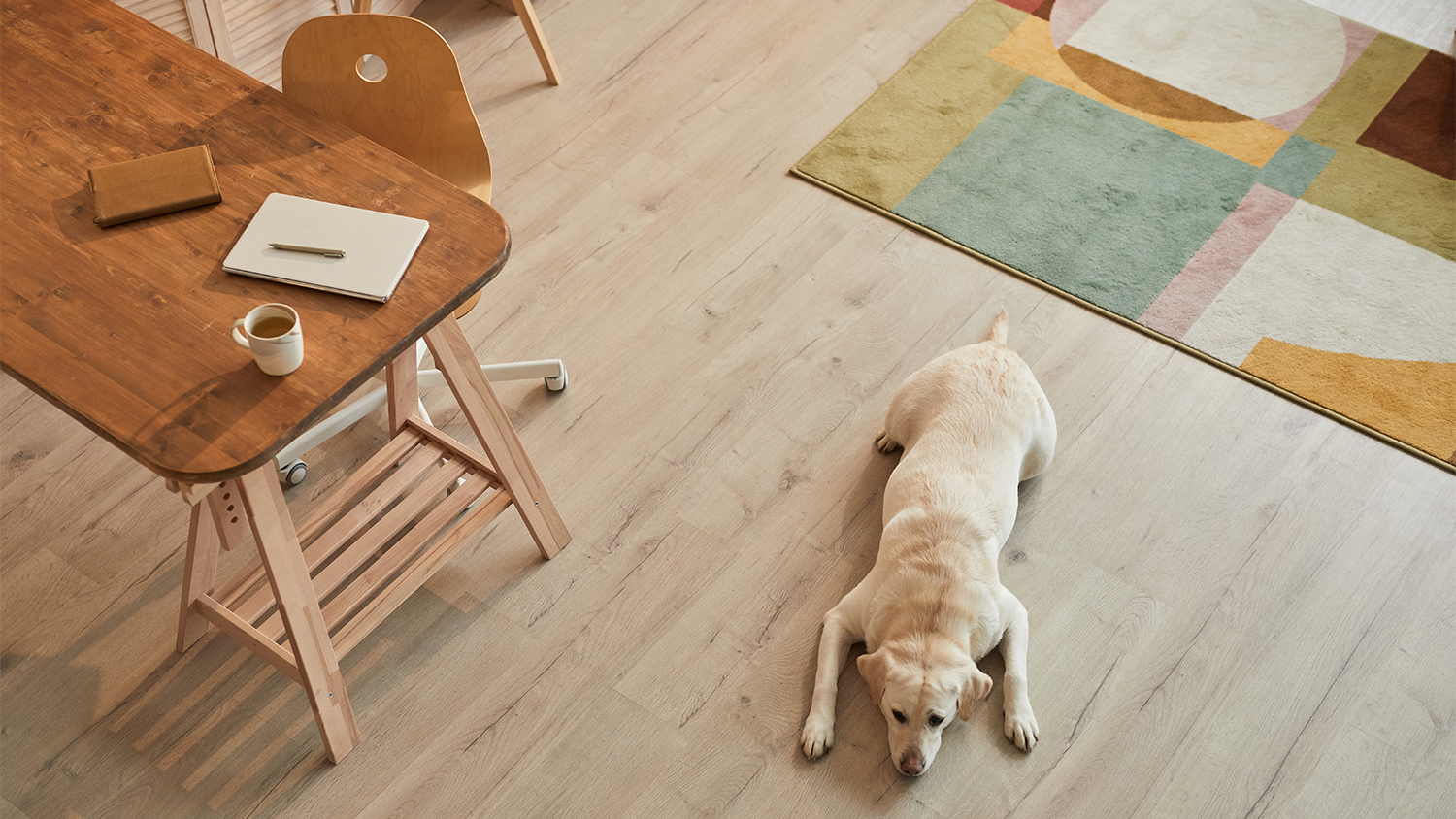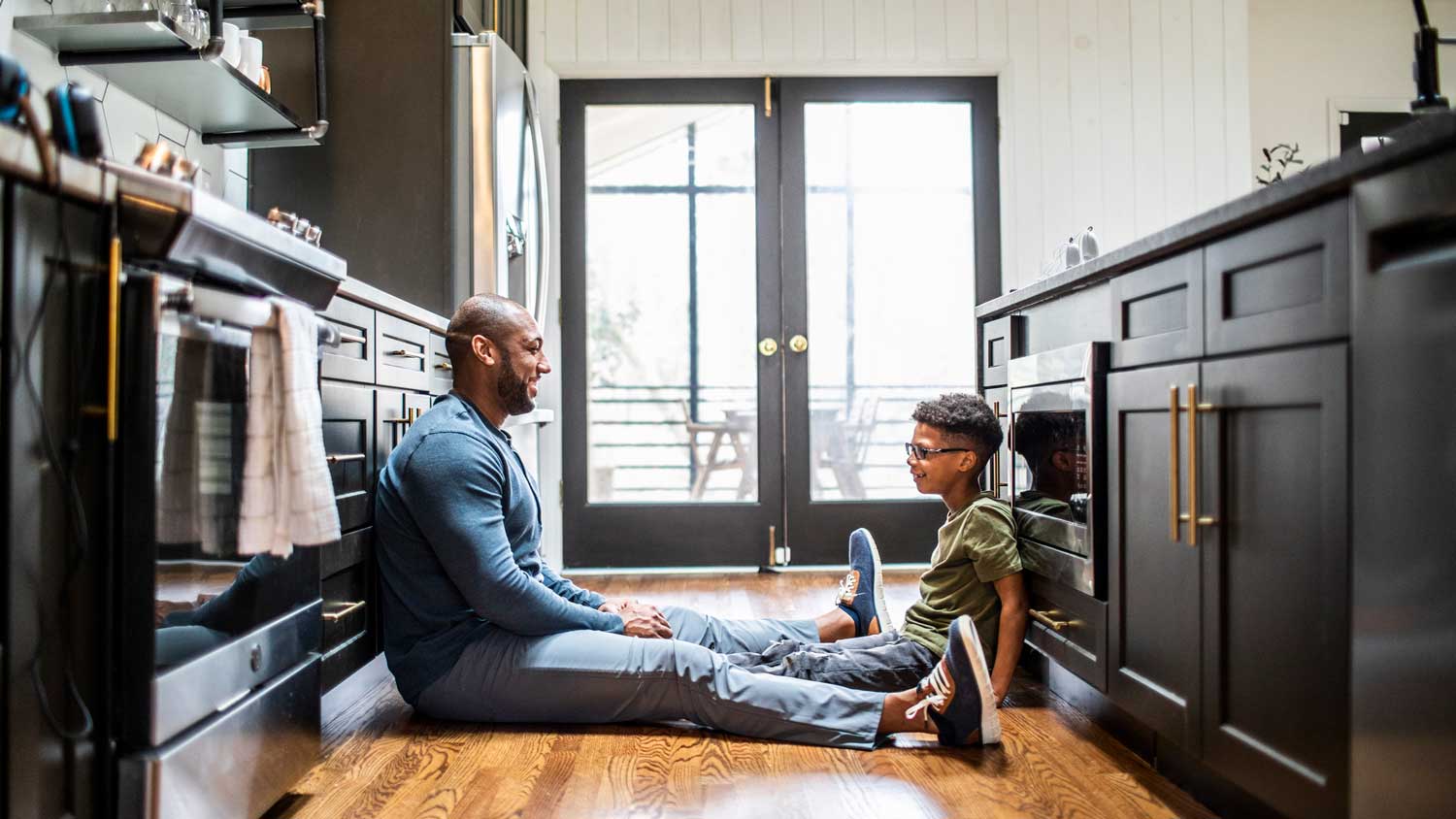
If your laminate is damaged, it’s time for repairs or replacement. This guide will show you everything you need to know about laminate floor repair costs.
Don’t be bamboozled by this DIY project


Bamboo flooring offers a modern look that’s easy to clean and maintain, making it a popular option for many homeowners. Additionally, bamboo is an environmentally friendly option because bamboo can be regrown in five to seven years, compared to around 20 years for hardwood. Bamboo is also a DIY-friendly flooring material, though installation can be time-consuming. Learn how to install bamboo flooring for an updated, eco-friendly look that will last for years.

Bamboo can expand or contract depending on the temperature and humidity levels. Therefore, it’s essential to let the flooring acclimate to the room for 72 hours. Stack the boxes of flooring planks and cut open the side of each box to allow the material to properly acclimate to the room in which it will be installed.
Once you’ve allowed the bamboo planks to acclimate to the room, follow these steps to install the flooring.
Before you install the flooring, you must prepare the subfloor. The subfloor must be even, clean, and dry. If you notice scratches or dents in the subfloor, repair them with putty or apply a floor leveler using a trowel. Subfloors with warping, sagging, or water damage will likely need replacing; the cost to replace subflooring is $900 to $3,000.
Once you’ve completed repairs, sand any rough spots on the subfloor. Then, vacuum it thoroughly and wet-mop it with warm water. Allow it to dry completely before you begin the floor installation process.

Before installing the bamboo floor, lay it on the subfloor to ensure you’re happy with the finish. Consider which way you want the planks to run (vertically or horizontally) and arrange the planks into piles of light, medium, and dark colors and grains. Lay the planks down, staggering the colors and patterns for a natural appearance.

Measure the width of the planks and add ½ inch to determine how far from the wall your starting line should be. The extra ½ inch allows the bamboo to expand once it’s installed. Use a tape measure and chalk line to mark the starting line.

Install the first row of flooring using the starting line as a guide. Add spacers between the wall and the first row to ensure the ½-inch expansion gap remains as you install. Then, install the second row, then the third, and so on. The installation method depends on the type of flooring planks you have.
Click-lock bamboo flooring planks are attached by snapping the interlocking joints into place. This method is the easiest for DIYers and allows you to install a floating floor without nails or glue.
Glued-down bamboo flooring requires applying an adhesive to the subfloor and installing the flooring planks directly on top. This creates a stable floor but is a messy and time-consuming installation method best left to experienced DIYers or professional flooring installers.
Nailed-down bamboo flooring can be installed on a wood subfloor by nailing the flooring planks to the subfloor using a pneumatic flooring nailer. This method produces a stable floor but is more time-consuming than floating or gluing the planks.
Once most planks have been installed, cut the final row to size, leaving a ½-inch expansion gap between the final planks and the wall. Wedge this final row into place using a pry bar to ensure a secure fit.

Once the flooring is in place, it’s time to install the baseboards and transition strips. The baseboards will cover the expansion gap and help the floor look more finished. You can paint or stain the baseboards to blend better with your new bamboo floor.
Install transition strips wherever the bamboo floor meets another type of floor, like carpet or vinyl, for a smooth transition between the different materials. Transition strips also make the floor safer since there’s no trip hazard as you move from one type of flooring to another.

Next, clean the floor using a broom and a soft mop. This step will remove any remaining dust from the installation. To prevent damage, use a safe floor cleaner for hardwood floors.

Wait at least 24 hours before you move furniture onto your new floors. This gives the floor time to settle and adapt to the room.
Bamboo floor installation can be a DIY project if you feel comfortable taking it on. Doing so can save you between $5 and $7 per square foot in labor costs for a floating installation or $8 to $10 per square foot for a glued or nailed floor. However, if you don’t have experience installing floors, you might make installation mistakes that could cost you more in the long run.
Hiring a local flooring company ensures a professional installation that’s free of errors. Professional installers have the proper tools and experience to install your floor quickly and efficiently. Bamboo flooring costs between $1,750 and $5,000, or an average of $1,300, including labor.
From average costs to expert advice, get all the answers you need to get your job done.

If your laminate is damaged, it’s time for repairs or replacement. This guide will show you everything you need to know about laminate floor repair costs.

OSB is a common material used for subflooring, wall sheathing, and roofing. Here’s a breakdown of how much OSB panels will cost for your project based on type and size.

Updated flooring can make any room in your home feel brand new. Explore flooring installation costs in Baltimore, MD, from materials to labor costs.

Confused about what type of plywood is best for subflooring? This guide tells you all you need to know, based on the unique requirements and scope of your project.

Outdated, dingy baseboards can make your home look drab and dull. This guide will help you choose who to hire to replace your baseboards for a refreshed look.

Floor joists are an important part of your flooring system. Learn more about what a floor joist is, what it does, and when to repair it.